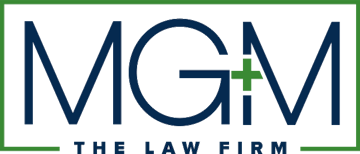Careful consideration of the language used in an insurance policy, or any contract for that matter, is extremely important. A food services company, Meyer Natural Foods LLC (“Meyer”), found that out the hard way in a recent case filed in the U.S.D.C for the District of Nebraska.[1] Exclusionary language in an insurance policy precluded Meyer from recovering its $1.4 million of damages related to the loss of a beef order due to contamination from a pathogen. Meyer had contracted with a beef supplier, Greater Omaha Packing (“Greater Omaha”) to purchase certain beef products. As part of their contract, Meyer required Greater Omaha to obtain an insurance policy to protect the value of the beef that was to be shipped, which they did through the Defendant in this case, Liberty Mutual. One of the beef shipments Greater Omaha made to Meyer, unfortunately, contained E. coli, which resulted in the destruction of the entire shipment valued at $1.4 million dollars.
In an effort to recover that loss, Meyer turned to the Liberty Mutual insurance policy, which was purchased by Greater Omaha pursuant to their agreement. However, there were certain exclusions in the policy, which may not have been considered by Meyer and/or Greater Omaha, and this language is the reason that U.S. District Judge John M. Gerrard dismissed Meyer’s suit against Liberty Mutual. The language in question? An exclusion of coverage for “loss attributable to . . . contamination”. Meyer’s main argument was that the policy exclusion did not specifically refer to E. coli, and that the word contamination is ambiguous, such that E. coli cannot be included therein. But that argument was unsuccessful, as the court simply relied primarily on the plain meaning of the word contaminate, “to render unfit for use by the introduction of unwholesome or undesirable elements.” In doing so, the court determined that E. coli clearly fits within this definition.[2]
The first lesson to take away from this case? Always read and understand the insurance policy that will be covering a potential loss of your property. No matter where you are on the food chain, you must be aware of all provisions of the insurance covering your property. In this instance, Meyer did not obtain the insurance policy directly, but rather Greater Omaha did as part of their contract. This case is a cautionary tale for obtaining insurance coverage of your property through a third-party. In cases where a third-party obtains coverage, you still must read the policy, and understand the implications of its various exclusions.
Taking a step back to think about this particular scenario, one must ask, for what purposes would a company in the food distribution and supply industry seek insurance on their food products from a potential loss? Risk of contamination or adulteration of the beef due to a pathogen such as E. coli would clearly be high on that list and, therefore, it should have been tantamount for Meyers to have sufficient language in the policy to protect against such an incident and ensure coverage. Is it possible that Meyer never saw the insurance policy? Sure. But that is the point. A company, or their counsel, should always read every insurance policy with a fine-toothed comb to ensure that their property will be protected in the event of loss, even if they did not directly obtain that policy.
This is not to suggest that Liberty Mutual was hiding the ball when including exclusions in their policy. Rather, it appears Liberty Mutual was simply protecting its own interests. Liberty Mutual likely inserted this contamination exclusion with this very type of loss in mind. In many cases, as in this one, insurance companies are providing coverage to sophisticated companies that have the ability to negotiate the policies terms. Including multiple exclusions as a starting off point for a well negotiated insurance policy is simply good business for an insurance company. In fact, this case is not alone, as there have been a number of recent cases in which similar exclusions have been applied by the courts to preclude policy coverage.[3]
There was one final gaffe: One of Meyer’s main arguments in the suit was that the word “contamination” was ambiguous and therefore did not include beef tainted with E. coli. However, in their own Complaint in this very case, they referred to their property loss as the result of contamination. In fact, they referred to the “contamination” of beef by a pathogen eleven times. To even the non-legal trained eye this position is contradictory. One would be hard pressed to persuade a judge or jury that the very word used by that party to describe their property loss, is actually ambiguous when written in the insurance policy intended to cover that very property loss. A reading of Judge Gerrard’s decision shows that this word choice in the Complaint certainly impacted the Court’s decision.
Again, the final take-away of this case study: lawyers need to choose each and every one of their words very carefully in all pleadings submitted to court.
Meyer Natural Foods LLC, et al. v. Liberty Mutual Fire Insurance Co., C.A. No. 8:15-cv-03116
[1] Meyer Natural Foods LLC, et al. v. Liberty Mutual Fire Insurance Co., C.A. No. 8:15-cv-03116
[2] The plain meaning was not the only basis for Judge Gerrard’s conclusion, as will be explained further below.
[3] Perhaps the most extreme example is when the Eleventh Circuit Court of Appeals affirmed a decision by the USDC for Northern Alabama in 2011. The Appellate Court determined that a curry aroma from a neighboring Indian restaurant was considered a “pollutant” under the insurance policy, such that the property damage (fur coats) caused by the aroma was not protected by the policies coverage.
Maxine Furs, Inc. v. Auto-Owners Ins. Co., 426 F. App’x 687, 687 (11th Cir. 2011).

